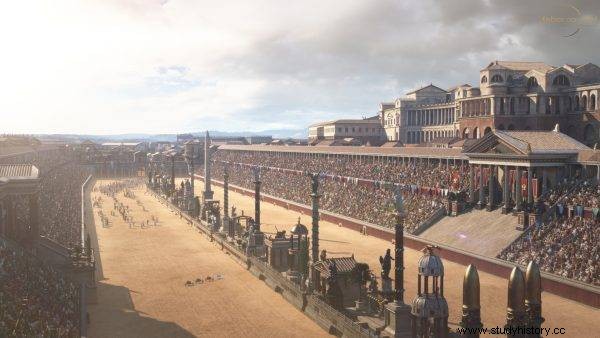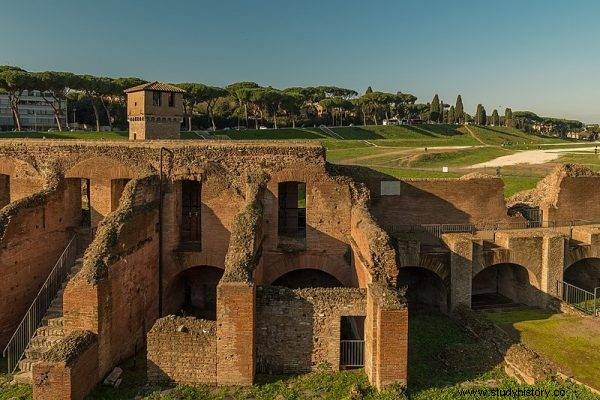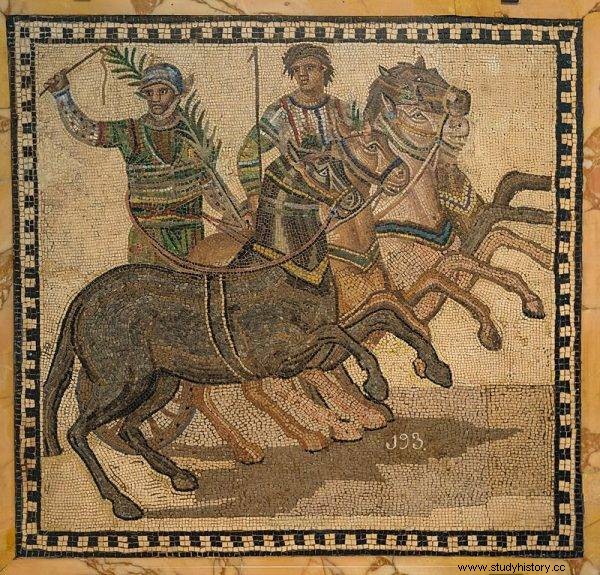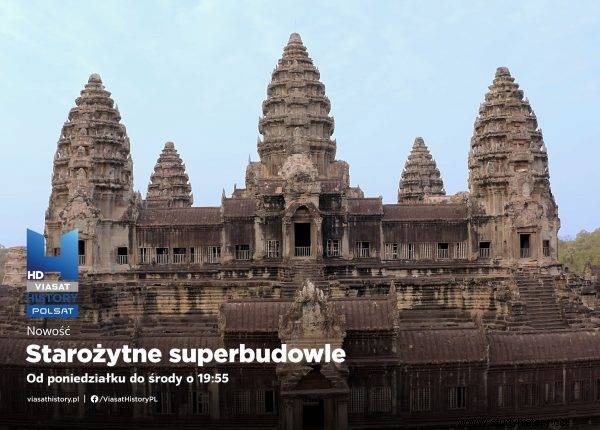In Rome, between the Palatine and Aventine hills, we can see the remains of one of the greatest attractions of the ancient empire - Circus Maximus.
Circus Maximus was the Roman equivalent of the Greek hippodrome. Over the centuries, repeatedly expanded, it became a symbol of a circus or - if you prefer - an entertainment building. In its final shape, it was 544 m long and 129 m wide. It could hold up to a quarter of a million people, although some sources say as much as 380,000 people. The valley between the Palatine Hill and the Aventine Hill, due to its location in the oldest part of the city and extremely favorable terrain, has served as a place of equestrian races associated with the oldest games in Rome since ancient times.
Circus Maximus is not the only impressive construction from centuries ago. Discover the secrets of Angkor Wat in Cambodia, Hagia Sophia in Istanbul and the Louvre in Paris in the "Ancient Superstructures" series. These architectural wonders have been studied for centuries, but they still hold many secrets. The series will be broadcast on the Polsat Viasat History channel. Premiere:on weekdays from Monday, December 6 at 19:55
Development of the circus
It is believed that the first rival chariots were seen there during the reign of King Tarquinius the Old (c. 600 BC). This ruler was also supposed to erect the first mobile and wooden buildings. The construction of the first permanent buildings dates back to 329 BCE, when the stables (carceres) were built, replaced in 174 BCE. brick version. It is worth asking the question at this point:why before 329 BCE no permanent structures were mentioned at the site of the later circus? It is quite possible that the valley was farmed and it was producing crops, as evidenced by the oldest sanctuaries of the village gods for example the altar of Consus, the Roman god who looks after the grain in the granaries.

Reconstruction of Circus Maximus. Author Katharina Huber
Successive rulers expanded the circus. In the times of Popejusz, a fence was built to separate the spectators from the arena of the competition. Unfortunately, around 55 B.C.E. two dozen angry elephants rammed the fence, spreading panic among the viewers. Due to these events, Circus Maximus underwent a general renovation already during the reign of Julius Caesar. The tracks were enlarged. Water channels were created between them and the audience, which were to prevent similar accidents and play an important role in the drainage system. For many years, the stands were also modernized, dividing them into "sectors" and boxes, where the performances were watched by representatives of different classes. All this so that the people can celebrate in the best possible conditions.
The Roman Games
The circus became the largest venue in Rome to host ludi , public games related to Roman religious holidays. These recurring events were sponsored by wealthy, well-to-do Romans or the Roman state for the benefit of the Roman people. Often thanks to them they gained political support. Most of them were held every year and they hardly resembled the games we know from Greece. They were gigantic, lavish and extravagant. They were also not so closely connected with religion, more often taking the form of a political celebration.

View of the south stand of Circus Maximus
Rectangular in shape with one rounded side, the Circus Maximus was adapted for chariot racing. In addition to the impressive size and specially designated tracks separated by the so-called with spin - a long and low wall with statues, altars or decorative elements - the viewers were given the opportunity to control the number of laps traveled. How? Well, on both sides there are spins There were three posts each, on which seven items were placed:eggs on one side and dolphins on the other. Each time the riders completed a lap, one item was taken. What were the races like?
Crème de la crème - chariot racing
For centuries, the arena was intended mainly for two-horse (biga) and four-horse (quadriga) races, and later for three- and six-horse races. Interestingly, there have been cases of deer-drawn chariot competitions.
Up to 24 races could be held on one day. The distance the riders had to cover was different:once it was five, then seven laps. Most often, four multi-colored teams competed at the same time. The wagon, harness and coachman's outfit were marked with white, red, green or blue, depending on their affiliation. Viewers could bet on the winner, sometimes spending their entire fortune on the bet. Perhaps that is why this form of spending free time was criticized by Roman intellectuals. So what if the Roman people loved such entertainment. Regardless of your place in the social hierarchy.

When the coachman, called auriga, heard the starting signal, he took the whip in his hand and used it to accelerate the team.
Let's get back to the race. When the coachman, called auriga , heard the starting signal, took the whip in his hand and used it to accelerate the team. The speeds achieved by the car were sometimes enormous and accidents happened. But also for such circumstances auriga he was prepared:on his head he wore a cap resembling a helmet, and behind his belt - a curved knife, which he used to cut off the reins in case of danger. Despite these solutions, many races ended in the death of animals or people.
Initially, slaves were at the helm of chariots, but with time, when it turned out that such performances brought fame and respect, members of aristocratic families became more and more often charioteers. There are also cases where the role of aurigi was received by the emperor, even Commodus . Well, what is not done for popularity and sizable prizes? Not only in ancient Rome, but also today.
Place of entertainment and tragedy
Circus Maximus was most often used for chariot racing, we already know that. It was also an arena for gladiatorial fights, venatio - hunting and killing wild animals, and also the site of "Greek-style games", ie athletics competitions. According to legends, this is where the abduction of the Sabine women took place.
The buildings were not spared by various types of accidents and disasters. He was struck by great fire at least three times:in 36 C.E., 64 C.E. and around 100 C.E. This is why, during the reign of Emperor Claudius, practically the entire structure of the circus was changed - from wooden to stone. The circus was also a flood site. They tried to rebuild it as much as possible. Some repairs, however, were very unforeseen and extensive, such as those carried out by Diocletian, after the seat collapsed, killing around 13,000 people. 
Circus Maximus enjoyed the Romans until the 6th century. The last horse races were held in 549. Today, tourists can only see the remains of its former power.
Bibliography:
- https://imperiumromanum.pl/kultura/architektura-rzymska/budowle-rzymskie/circus-maximus/ (accessed on November 29, 2021)
- Wiesław Konrad Osterloff, History of Sport , Warsaw 1976.
- American Institute for Roman Culture, Circus Maximus - Ancient Rome Live
- https://www.wilanow-palac.pl/rozrywka_w_starozytnym_rzymie.html (accessed on November 29, 2021)
